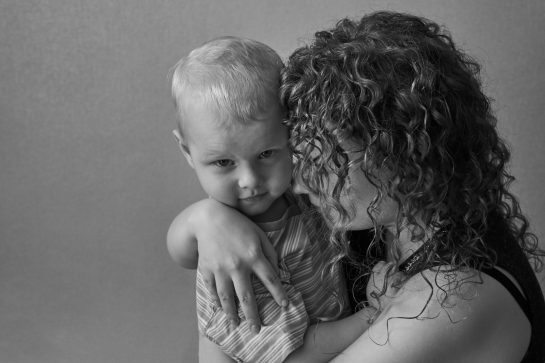Victim service providers (VSPs) offer support and advocacy to individuals and families who have suffered domestic violence. Although similar, support and advocacy have distinctly different roles to play to ensure long-term success for victims.
The Need for Victim Support and Advocacy
Did you know that domestic violence impacts an average of 10 million Americans each year? This breaks down to about one in four women and one in nine men who will experience some form of domestic violence in their lifetime. Chances are you know someone who falls into this category.
Victim service providers (VSPs) are social-service organizations that help survivors of domestic violence on the journey to recovery. Although the road to healing can be long and lonely, proper support and advocacy can greatly improve the odds of success.
Whether you’re a VSP team member, fellow health- and human-service organization, or an engaged community member, keep reading below to brush up on the distinction between victim support and advocacy and why it matters.
What Are Victim Service Providers?
The United States Department of Housing and Urban Development (HUD) defines VSPs as:
“[P]rivate nonprofit organization(s) whose primary mission is to provide direct services to victims of domestic violence.”
These types of organizations include, but are not limited to:
- Domestic violence shelters
- Transitional housing programs
- Rape crisis centers
- Dating-violence support programs
- Advocacy and support services
- Emergency-housing providers
- Rapid rehousing programs
- Crisis call lines
- Educational programs
- Self-defense courses
- Medical support
The importance of VSPs cannot be understated. They serve as a lifeline—sometimes the only lifeline—for victims and survivors of domestic violence.
When someone enters a VSP, they are generally in need of two main resources: support and advocacy. While there is certainly overlap between these two provisions, they’re not the same. Support refers to a wide net of potential resources (i.e., food assistance, housing), and advocacy specifically relates to assistance in legal and criminal proceedings.
What Is Victim Support?
You can think of domestic victim support as a general category for domestic violence resources. Typically, victim support focuses on how to help survivors in their immediate, personal lives.
For instance, a person fleeing domestic violence may have immediate needs that VSPs can help address:
- Where will I sleep tonight?
- How will I address food, clothing, and other material needs I might have?
- How will I ensure the health and safety of my children?
- What ways can I protect myself physically and mentally against my abuser?
- Where can I find a steady source of income?
Victim support aims to answer these (and other) questions. Primarily, VSPs can offer support through community care coordination or by providing the support themselves. Either way, support focuses on meeting the socioeconomic needs and other social determinants of health (SDoH) that victims and survivors require.
What Is Victim Advocacy?
This advocacy focuses on the legal side of domestic violence, specifically if victims choose to pursue charges against their abusers. The University of South Florida’s law school defines a victim advocate as:
“[A] professional who is trained to respond with compassion and expertise to the victims of crime, violence and abuse. This includes crisis intervention, advocacy and accompaniment, safety planning, academic and housing assistance, and nonjudgmental support to victims to help them get through the experience and regain control of their lives.”
While some specifics of victim advocacy vary state by state (such as who each jurisdiction defines as a victim), all states and municipalities in the United States adhere to a list of core rights for victims of crimes. In order to ensure that all legal proceedings respect these rights, victim advocates offer support to domestic violence survivors throughout the entire criminal prosecution process.
Typically, victims can find an advocate through one of two avenues: system-based advocacy and community-based advocacy.
System-Based Advocacy
This type of advocate is offered through a prosecutor’s office or other justice-based agency. Since these advocates are affiliated with agencies mandated to investigate and prosecute criminal behavior, they are required to report evidence of abuse, even if the victim does not consent. One trade-off is that some victims might feel believe they shouldn’t speak freely and in confidence with this type of advocate.
Community-Based Advocacy
As an alternative to system-based advocacy, community-based advocates work for independent VSPs and are able to keep almost all information confidential, barring state laws about mandated reporting. (For example, some states like Utah require that all witnesses or recipients of information about domestic child abuse report that abuse.)
Their aim is to empower and support survivors, meaning that individual autonomy and decision making is given top priority. Many VSPs—though not all—provide these types of advocates for anyone using their services.
The Link Between Providers and Advocates
As mentioned above, VSPs act as the hub for providing both general support and advocacy for victims of domestic violence. Many of these organizations offer both services for their clients, though some may focus on just one or the other. Inevitably, providers and advocates must know how to cooperate, particularly if they are from different organizations aiding the same individual.
Studies suggest that comparable databases (i.e., case management systems designed specifically for VSPs) are one of the most successful tools for linking providers to support and advocacy. ClientTrack™ is the industry-leading case management software for VSPs and has a dedicated history of aiding victim support and advocacy across the U.S.

Safe Horizon, one the nation’s leading victim assistance organizations, has been using ClientTrack to achieve their goals, increase their services, and secure funding, all while keeping their data private and secure.
“ClientTrack helps us a lot,” says Vicki Royter, AVP of Data Systems and Security for Safe Horizon. “With one data analysis… of agency-wide stats, we can create reports really quickly. It helps us to monitor the integrity of our data. If, for example, a user is entering cases, but not documenting referrals for services, we can see that.”
To learn more about our case study on Safe Horizon—or to see how ClientTrack can help VSP organizations maximize the support and advocacy they can offer—feel free to reach out to our team of experts today.
Enjoy This Article? You Might Also Like:
Why Domestic Violence Awareness Matters



